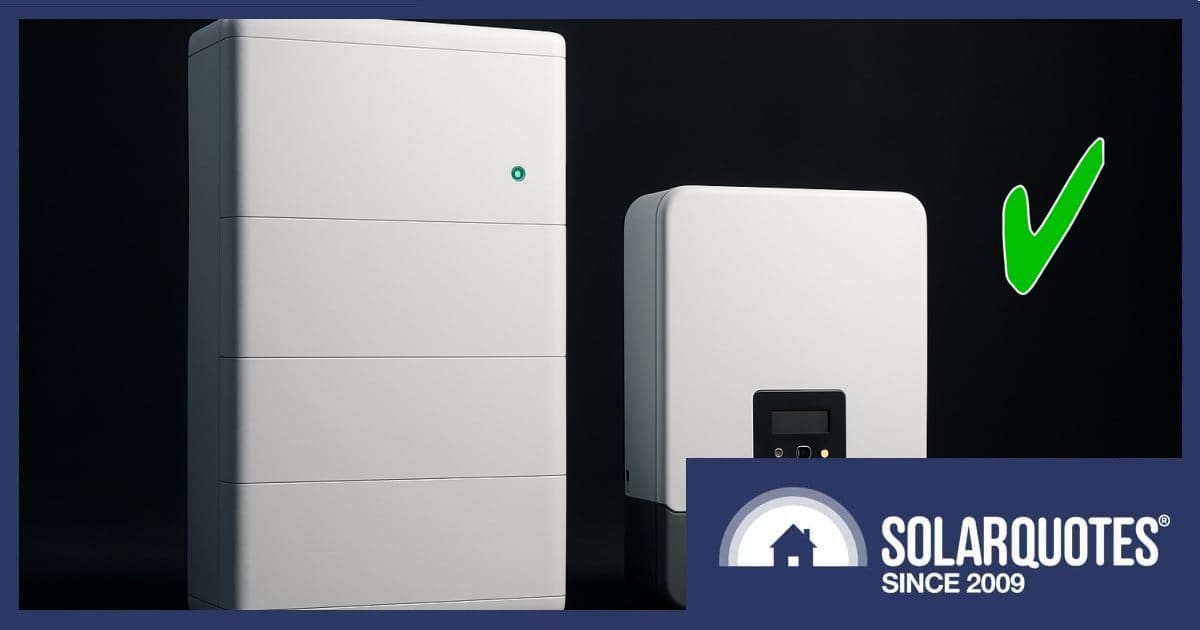
Synergy’s supported solutions list for Western Australia’s Residential Battery Scheme was updated last month, and again on Monday. See the newer kids on the WA battery rebate block, some with a catch.
Which Manufacturers Were Added To Synergy’s List?
Since its August update, models from the following inverter and battery manufacturers have been added to the Synergy supported solutions list:
- Hyxi Power – HYX-H(3-6)K6-HS and HYX-H(3-8)K-HS single-phase hybrid inverters.
- SolarEdge – SEK(5-10K)-AUB three-phase hybrid inverters, SE(3000-10000)H single-phase hybrid inverters, SE(3000-10000)H-MM HomeHub inverters.
- Solplanet – ASW(3000-6000)H-S2 hybrid inverters.
- EsySunHome – HM6 all-in-one battery system.
- Solis – S5-EH1P(3-6)K-L hybrid inverters.
- SMA – SBSE(3.6-6.0)-50 Sunny Boy Smart Energy hybrid inverters.
All these new players had applications for Western Australia’s scheme submitted prior to June 30; so they’ve been waiting a long time for approval. Still conspicuous by its absence from the list is Tesla.
The recent additions make for a total of 18 brands on the supported solutions list, all of which along with eligible models can be viewed here.
The Catch
In the case of Solplanet, EsySunHome, Solis and SMA, the current model listings also require what’s referred to by Synergy as the “Catch Power gateway” and “Catch Power Catch Solar Relay”, which would be Catch Power’s Catch Control. This is a very useful but pricey bit of kit, with the 2-Channel Catch Control (formerly Relay) costing $447 and the newer 6-channel device is now $726 — a significant drop in price since it was first released.
Horizon Power’s Approved Inverter List
For those in the Horizon Power service area, its approved inverter list for the Residential Battery Scheme can be found here — currently only 8 manufacturers are listed.
Horizon says:
“For Basic EG connections, only the following inverter makes and models are initially compatible with the SGD (supplied by us). This list will continue to grow as more inverters become compatible.”
A couple of acronyms there to explain — EG stands for Embedded Generator and SGD stands for Secure Gateway Device (SGD). Part of Horizon’s Smart Connect Solar initiative, an SGD is a small box of electronics enabling Horizon Power to remotely throttle or switch off systems in a scenario where the level of electricity being exported into the grid threatens network stability.
Horizon supplies and maintains the SGD free of charge.
WA Residential Battery Scheme Recap
Western Australia’s scheme kicked off on July 1, 2025.
In Synergy’s service area, the state rebate is worth $130 per kilowatt-hour of usable battery capacity up to 10 kWh; meaning a maximum rebate of $1,300. In the Horizon service area, the WA battery rebate is worth $380 per kilowatt-hour of usable battery capacity up to 10 kWh — a maximum rebate of $3,800.
In addition to the state incentive, the national government battery rebate — currently worth around $330 (after admin fees) per kilowatt-hour usable capacity — can be combined with it. So, an eligible 10 kWh battery system installed in Synergy’s service area can get around $6,600, and in the Horizon area, ~ $7,100 with the two incentives combined.
Another Catch – VPP Participation
Speaking of catches, it seems a big one for quite a few WA solar owners considering a home battery is a state rebate requirement requiring connection to a Virtual Power Plant (VPP). The thought of giving a third-party control over their battery has proved to be a deal-breaker for some, who have chosen to take a financial hit by only opting for the national rebate. The national scheme requires systems being VPP-ready, but participation in a VPP program isn’t required.
Western Australians aren’t exactly spoiled for choice when it comes to VPPs. For Synergy customers, there’s Synergy’s Battery Rewards or Plico Energy VPP. You can see how these programs stack up on SolarQuotes’ VPP comparison page. In Horizon Power’s area, there’s only Horizon Community Wave.
You can read our full explainers for Western Australia’s Residential Battery Scheme here and the national Cheaper Home Batteries program here.

 RSS - Posts
RSS - Posts



It’s unfortunate, but customers should prepare themselves for Tesla not to be bending any further to be on the Synergy list.
Is this just for the WA VPP or is there a broader issue with Powerwall on the Synergy network? We consumers have no visibility into what is going on behind the scenes. 🙁
Taking advantage of the WA lift on 5kW inverters and SolarEdge’s free upgrade is a good deal right now. You can change your old 5kW SolarEdge Inverter to a 10kW HomeHub for free when you add a Battery and the Backup box.
However, the WA state rebate is really not that attractive for everyone. You have to signup to a VPP that all seem to have more “brochure-like” information than actual hard facts and all for $1300. If you have SolarEdge you have to also pay for and add the additional control box that has even less information on what it does, how it works, what it will do and what it needs, also no price information. Installers are also late being paid for the state rebates.
Where do you get this info from, I keep looking on Synergy but struggling to find updates. Thank you.
Slightly off topic (but only just) Energy Policy WA is consulting on proposed changes to the Electricity System and Market Rules to support the integration of small-scale rooftop solar and batteries, and are inviting feedback from stakeholders until November 20th.
More info at:-
https://www.wa.gov.au/government/document-collections/consultation-electricity-system-and-market-rules-distributed-energy-resources-roles-and-technical-requirements
The good news is that they seem to be implementing controls in line with standards at other states which allow flexible export limits – such as those allowed by SAPN. Most of the documents are about the requirements for the customer end and don’t get into what the network would eventually permit – but I would suspect probably 10kW for a single phase connection similar to South Australia.
Anyhow it appears that the consultation phase is now open if you wish to comment.